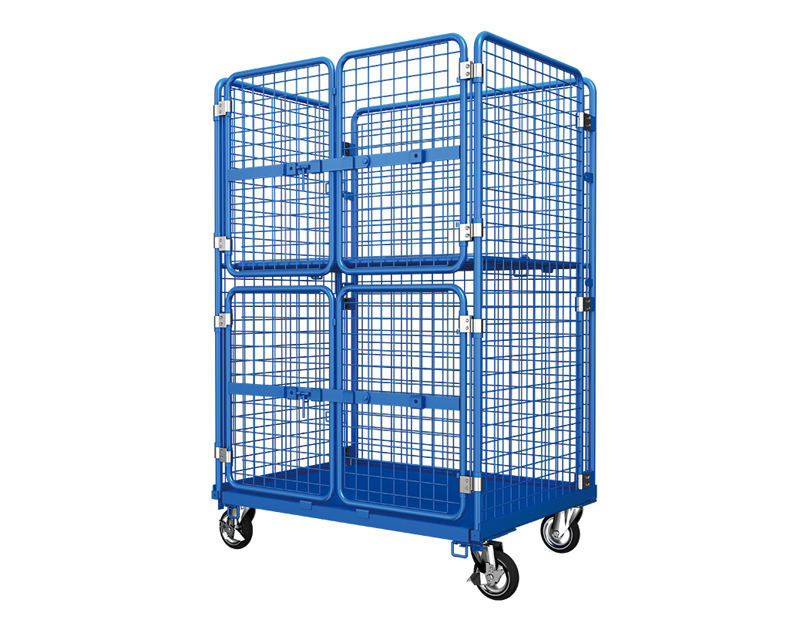How to improve the utilization rate of logistics trolley?
2025-02-24 14:57
With the rapid development of the logistics industry, related costs are also on the rise. Businesses are facing increasing management fees for a large number of packages. To save costs and improve efficiency, optimizing the utilization rate of logistics trolleys is crucial. This article will explore how to enhance the utilization of logistics trolleys by focusing on space planning and goods placement strategies.

Understanding the Importance of Trolley Utilization
Efficiently using logistics trolleys can significantly impact operational costs and productivity. By maximizing the space on each trolley and organizing goods effectively, businesses can:
-
Reduce transportation costs: Optimizing trolley space minimizes the number of trips required, saving time and fuel.
-
Improve warehouse efficiency: Well-organized trolleys streamline loading and unloading processes, reducing handling time and labor costs.
-
Enhance inventory management: Proper goods placement on trolleys simplifies tracking and locating items, improving inventory accuracy and reducing losses.
Strategies for Improving Trolley Utilization
-
Space Planning:
-
Multi-layer shelving: Utilize the vertical space on the trolley by adding multi-layer shelving. This creates additional storage space without increasing the footprint of the trolley.
-
Adjustable shelves: Opt for trolleys with adjustable shelves to accommodate items of different sizes and shapes. This allows for customized space utilization based on the specific goods being transported.
-
Dividers and compartments: Use dividers and compartments to separate different types of goods on the same trolley. This improves organization and prevents items from shifting during transportation.
-
Goods Placement:
-
Categorization: Group items by category or destination to streamline sorting and retrieval processes. This reduces the time spent searching for specific items and improves overall workflow efficiency.
-
Weight distribution: Distribute the weight of goods evenly on the trolley to prevent tipping and ensure safe handling. Heavier items should be placed on the bottom shelves, while lighter items can be placed on top.
-
Loading sequence: Plan the loading sequence based on the delivery or unloading order. This ensures that items are readily accessible when needed, minimizing delays and improving delivery efficiency.
Choosing the Right Logistics Trolley
Selecting the appropriate logistics trolley is essential for maximizing its utilization rate. Consider the following factors:
-
Size and capacity: Choose a trolley that can accommodate the typical size and weight of goods being transported.
-
Material: Opt for a durable and sturdy material that can withstand the rigors of daily use.
-
Mobility: Consider the type of wheels or casters best suited for the environment in which the trolley will be used.
-
Additional features: Look for features such as adjustable shelves, dividers, or compartments that can further enhance organization and space utilization.
Real-World Examples and Case Studies
-
E-commerce Fulfillment Center: An e-commerce fulfillment center implemented multi-layer shelving on their logistics trolleys, increasing their storage capacity by 30% and reducing order processing time by 15%.
-
Warehouse: A warehouse utilized dividers and compartments on their trolleys to separate different product categories, improving inventory accuracy and reducing picking errors by 10%.
Frequently Asked Questions (FAQ)
-
Q: What is the average cost of a logistics trolley?
-
A: The cost varies depending on the size, material, and features of the trolley. Contact a supplier for a quote tailored to your needs.
-
Q: Can logistics trolleys be customized?
-
A: Yes, many manufacturers offer customization options to meet specific requirements.
-
Q: How do I maintain my logistics trolleys?
-
A: Regularly inspect the trolleys for any signs of damage or wear. Lubricate moving parts as needed and replace any damaged components promptly.

